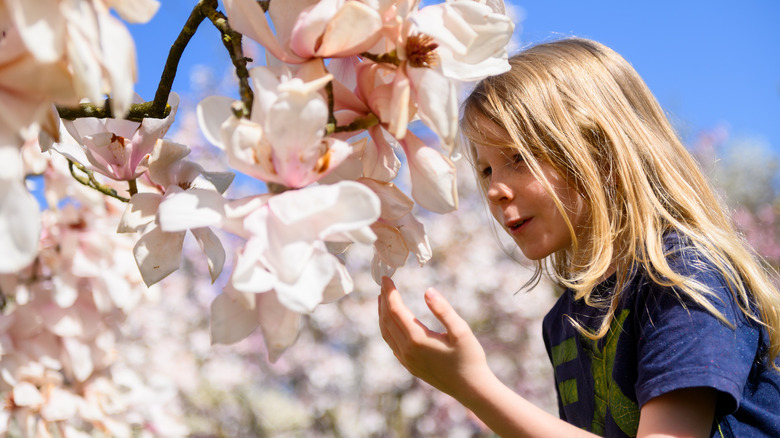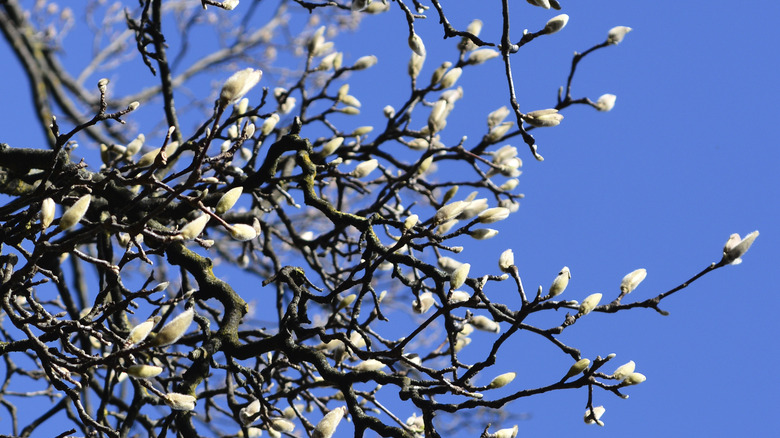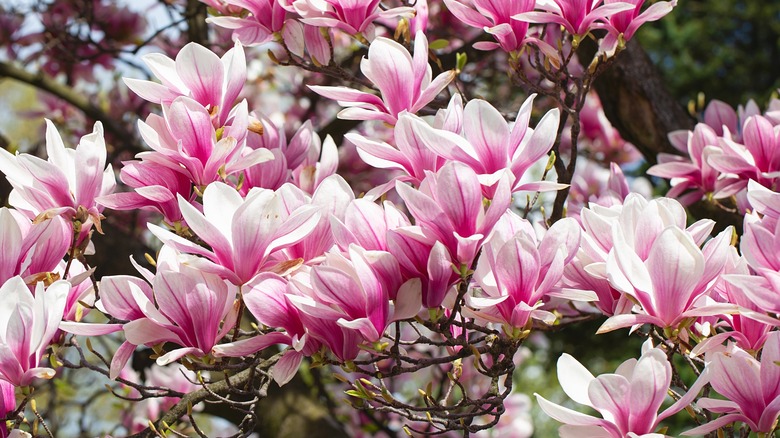Ensure Your Magnolia Flower Buds Bloom Year After Year With These Tips
Often emblematic of the South, magnolia plants are adaptable and come in various types, ranging from shrubs to gigantic trees. Their breathtaking beauty, glossy leaves, and teacup-like white and pink flowers are what draw most people to these woody wonders. The appeal of magnolias is amplified by the contrast of their striking blooms and dark forest green leaves with silver undersides, making them a shining star in any yard.
Although these enchanting, aromatic trees explode with flowers in the spring and summer, their blooming can be unpredictable and fickle, especially when they stop flowering without warning. Many things can cause magnolias not to bloom, like the wrong location or improper care, but some of these things are out of our control, like cold temperatures or a lack of rainfall. Planting your magnolia tree in the right location and correctly caring for it can ensure that it blossoms and thrives year after year.
Why does my magnolia tree not bloom?
Several factors can cause your magnolia's reluctance to flower. One of the most common issues is planting it in the incorrect location. Without proper sunlight, soil, or care, your magnolia may not bloom. Magnolias need full sun. Without adequate sunlight, they can't produce the energy needed to create flower buds, resulting in a lack of blossoms. Another issue could be the wrong soil type or over-fertilization. Magnolias need well-draining, slightly acidic soil. If magnolias are planted in waterlogged or clayey soil, they will grow poorly and may not produce flowers at all. Additionally, over-fertilizing can cause your magnolia to put more energy into producing foliage rather than devoting its resources to creating blooms.
There are some reasons your magnolia isn't flowering that are out of your control. One of the most common issues is due to cold temperatures. Magnolias are native to the Southern United States, the Himalayas, and East Asia, so they are sensitive to below-freezing temperatures and wind. If you decide to plant a magnolia, make sure to choose one that will do well in your zone to ensure it blooms every year.
When do magnolias bloom?
Some magnolias start to flower as early as February. This early blossoming continues through the springtime, with peak blooming between April and June. Some species even continue to flower into the summer, with blooms lingering into August. Proper care and maintenance are essential to ensure your magnolia blooms every year.
While they don't need a lot of pruning, if any, the timing and technique can be the difference between a magnolia tree that flowers and one that doesn't. Pruning at the wrong time can inadvertently remove flower buds that would have grown into the flowers for the following year. Over-pruning your tree is another mistake you can avoid, as going overboard, especially in the summer, can stress it, preventing it from flowering. The best time to prune your magnolia tree is after the blossoms have faded, because this gives your tree time to heal and helps ensure that you don't accidentally trim off any buds. Keep these tips in mind when you grow and care for your magnolia tree. With the proper placement and attention, your magnolia tree can continue to bloom beautifully each year.


